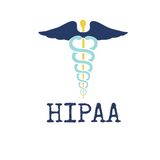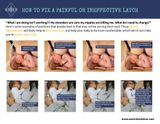Signs your baby has a tongue tie
The signs of tongue tie can vary depending on the severity of the condition, but some common signs to look for in infants include:
- Difficulty latching or staying latched during breastfeeding or chestfeeding
- Poor weight gain or slow growth
- Fussiness or irritability during or after feedings
- Fatigue or sleepiness during feedings
- Decreased milk supply
- Making clicking or smacking sounds while breastfeeding or chestfeeding or bottlefeeding
- Inability to fully extend or elevate the tongue
- Inability to stick out the tongue past the lower lip while sucking
- Heart-shaped or notched appearance to the tip of the tongue when extended
- Difficulty with certain types of movements
- Reflux or colic
- Sleep or breathing disturbances
Tongue function
Babies need to have proper tongue function in order to breastfeed or chestfeed effectively. The tongue plays an important role in milk removal by:
- Aiding in latch: The baby's tongue helps to position the nipple in their mouth and maintain a good seal around the breast or chest tissue.
- Stimulating milk flow: The baby's tongue compresses the milk sinuses in the breast, which stimulates the flow of milk and helps the baby to remove milk from the breast.
- Transferring milk: The baby's tongue moves in a rhythmic pattern, which helps to transfer milk from the breast to the back of the mouth, where it can be swallowed. The down movement of the back of the tongue during this rhythmic movement creates a vacuum which is a large factor in effective milk removal.
- Preventing air intake: The baby's tongue helps to create a vacuum in the mouth, which prevents air from being sucked in during feeding which can cause all kinds of upsets for both parent and baby.
- Promoting proper oral development: Sucking on the breast/chest tissue stimulates the baby's tongue and oral muscles, which promotes proper oral development and speech development.
When a baby has tongue tie, the tight lingual frenulum restricts the movement of the tongue, which can affect their ability to breastfeed or chestfeed effectively. This can lead to a number of breastfeeding challenges, including poor milk transfer, nipple pain, and reduced milk production. Treatment for tongue tie may involve a frenotomy, a simple procedure in which the lingual frenulum is clipped to release the restriction and improve tongue function.
What is a tongue tie?

A tongue tie, or ankyloglossia, is a condition in which the lingual frenulum, the piece of tissue that connects the tongue to the bottom of the mouth, is too tight or short, which can restrict the movement of the tongue. This condition can affect a person's ability to speak, eat, and breastfeed or chestfeed effectively.
In infants, tongue tie is a common condition that can affect up to 10% of newborns. Some infants with tongue tie may experience difficulties with breastfeeding/chestfeeding or bottle feeding, including latching onto the breast or chest, maintaining a good seal around the nipple, and transferring milk efficiently. Other infants with tongue tie may not experience any difficulties with feeding or may have mild symptoms that resolve on their own.
In older children and adults, tongue tie can cause speech difficulties, difficulty moving the tongue or opening the mouth, dental problems, difficulty swallowing, snoring and airway obstruction.
How tongue tie impact breastfeeding or chestfeeding (and sometimes bottle feeding as well)
A tongue-tied baby may have difficulty latching onto the breast, staying attached during feeding, or transferring milk efficiently, which can lead to a number of breastfeeding or chestfeeding challenges, including:
- Poor milk transfer: The baby may have difficulty removing milk from the breast or chest effectively, which can lead to poor weight gain, inadequate milk supply, or low milk production.
- Nipple pain and damage: The baby may be unable to latch onto the breast properly, which can cause nipple pain, soreness, and damage, such as cracks or bleeding.
- Frustration and stress: The baby may become frustrated or stressed during feeding due to the difficulty latching or milk transfer, which can lead to feeding aversion or early weaning.
- Reduced milk production: If the baby is unable to remove milk from the breast or chest effectively, the mother's milk production may decrease, leading to further breastfeeding challenges.
- Reduced breastfeeding duration: The difficulties associated with tongue tie may lead to premature weaning or reduced duration of breastfeeding.
How to treat a tongue tie and improve breastfeeding/chestfeeding
The treatment for tongue tie is three-fold:
- Frenotomy: This is a simple procedure in which a healthcare provider clips the lingual frenulum with either scissors or a laser to release the restriction and improve tongue function. Frenotomy can be performed quickly and easily in the provider's office or clinic, and usually does not require anesthesia. Frenotomy has been shown to be safe and effective in improving breastfeeding or chestfeeding outcomes.
- Body work: this can be a chiropractor, cranial sacral therapist or osteopath. The most important thing is that the provider is experienced with working with breastfed or chestfed babies in preparation and while recovering from tongue tie release. For optimal results, a few sessions of body work will be done before the release and a few after.
- Lactation care: Working with a knowledgeable lactation consultant is also very import. Here’s a list of tongue tie knowledgeable lactation consultants. They will bring all the work that you are doing together to help you meet your goals, give you exercises to help your baby gain full range of motion with their tongue, guide you in managing your milk supply and help to make sure your baby is getting enough to eat throughout the process.
Choosing who does the frenotomy is important!
Frenotomy in infants is typically performed by qualified healthcare professionals such as an ENT (ear, nose, and throat specialists), pediatric dentists who specialize in treating infants and children with tongue tie, who have training and experience in performing the procedure. Not all ENTs or pediatric dentists are experienced in doing frenotomies in infants that support breastfeeding or chestfeeding. Many do not understand the tongue function that is needed for breastfeeding or chestfeeding and do not do the appropriate release.
Lists of preferred tongue tie providers are available in support groups, but your lactation consultant will likely be the best source to find a qualified professional near you.
Frenotomy: Laser or scissors??

In this photo you can see that the tie is restricting upward mobility as most babies lift their tongue when crying.
The decision of whether to have a frenotomy done with scissors or laser depends on several factors, including the healthcare provider's preference and expertise, the severity of the tongue tie, and the age and health of the patient.
Both scissors and laser frenotomy have been shown to be safe and effective in releasing tongue tie and improving tongue function. Scissors frenotomy involves using a sterile pair of scissors to snip the lingual frenulum, while laser frenotomy involves using a laser to cut or ablate the tissue.
Some healthcare providers prefer laser frenotomy because it is less invasive and may cause less bleeding and pain than scissors frenotomy. Laser frenotomy may also be more precise and result in better healing. However, laser frenotomy may be more expensive than scissors frenotomy, and not all healthcare providers have access to laser technology.
Ultimately, the decision of whether to have a frenotomy done with scissors or laser should be made in consultation with a qualified healthcare provider who can provide personalized advice based on the individual's specific circumstances. It is important to choose a healthcare provider who has experience and expertise in performing frenotomy procedures and who can provide adequate follow-up care after the procedure.
Body work for tongue function: Cranio Sacral Therapy, Osteopathy and Chiropractics
Cranial sacral therapy (CST) is a gentle, non-invasive technique that is used to manipulate the bones of the skull and the fluid that surrounds the brain and spinal cord. It is believed that CST can help to balance the flow of cerebrospinal fluid and release tension in the body. Osteopathy is a form of complementary medicine that uses manual techniques to promote health and wellbeing by treating imbalances in the musculoskeletal system. Chiropractic care can be beneficial for babies with tongue tie in a number of ways as well. What’s important is finding a skilled provider in your area who is practiced with helping babies to their latch and understand what tongue function is needed for a baby who is breastfeeding or chestfeeding. Body work has many benefits including:
- Improved latch and feeding: bodywork can help to address any restrictions or tension in the baby's jaw, neck, and spine, which can improve their ability to latch onto the breast and feed more effectively.
- Alleviation of colic and reflux: Osteopathy can help to release tension in the baby's digestive system, which can reduce symptoms of colic and reflux.
- Enhanced sleep: Many parents report that their babies sleep more soundly after body work session, which can be beneficial for both the baby and the parents.
- Improved immune function: bodywork has been shown to stimulate the immune system, which may help to reduce the risk of infections and illnesses.
- Decreased stress and anxiety: bodywork can help to promote relaxation and reduce stress and anxiety in both the baby and the parent, which can have a positive impact on overall health and wellbeing.
- Reduced discomfort: Babies with tongue tie may experience discomfort or pain while feeding, and chiropractic care can help to alleviate these symptoms by addressing any restrictions or tension in the baby's neck and spine.
It is important to note that while body is generally considered safe for babies, it should only be performed by a qualified practitioner who has experience working with infants. It is also important to consult with your healthcare provider before trying any new therapies or treatments for your baby.
Therapies for older babies or young children
Though body work is still important with older babies or young children there are other supportive therapies that can also help, including:
- Speech therapy: If the child is experiencing speech difficulties related to tongue tie, speech therapy may be recommended. A speech therapist can work with the child to improve articulation, pronunciation, and other aspects of speech. Some are also able to help with breastfeeding or chestfeeding or bottle feeding.
- Feeding therapy: If the child is having difficulty eating solid foods or transitioning from breastfeeding or chestfeeding to a bottle or cup, feeding therapy may be recommended. A feeding therapist can work with the child to improve oral motor skills and develop new feeding strategies.
- Myofunctional therapy: Myofunctional therapy is a type of therapy that focuses on improving the function of the muscles of the face, mouth, and throat. It may be recommended for older children with tongue tie who are experiencing speech or feeding difficulties.
- Orthodontic treatment: In some cases, orthodontic treatment may be recommended for older children with tongue tie. This may include the use of braces, aligners, or other orthodontic appliances to improve the alignment of the teeth and jaws.
References
- Effectiveness of craniosacral therapy in the treatment of infantile colic. A randomized controlled trial - PubMed
- Efficacy of an Osteopathic Treatment Coupled With Lactation Consultations for Infants’ Biomechanical Sucking Difficulties - PubMed
- Manual Interventions for Musculoskeletal Factors in Infants With Suboptimal Breastfeeding: A Scoping Review
- What is the evidence that chiropractic care helps sub-optimal breastfeeding?




